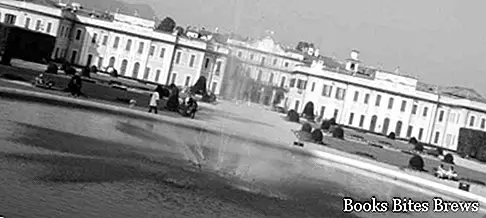What to see in Varese, itinerary including the main monuments and places to visit, including Palazzo Estense, civic museums, Church of Sant'Antonio Abate and Church of San Vittore.
Tourist information
Home to important commercial and industrial activities, Varese is located in a magnificent position on a slope that descends from Mount Campo dei Fiori to the lake of the same name.
In the past, the surrounding area was characterized by human settlements in villages built on stilts, while in the medieval period it was transformed into a fortified village located within the territory dominated by Castelseprio.
Subsequently it passed first to the Torriani, then to the Visconti during the thirteenth century, finally to the Duchy of Modena towards the end of the eighteenth century.
Palazzo Estense, also known as Palazzo Ducale, was built by the architect Bianchi, on behalf of Francesco III d’Este, Duke of Modena, in the second half of the eighteenth century.
Inside there are large rooms characterized by numerous decorations, including the Estense hall, which has a beautiful frescoed vault and a remarkable Baroque fireplace.
At the back of the building there are the Este Gardens, a grandiose Italian public park.
The civic museums are located in the Villa Mirabello, built between the eighteenth and nineteenth centuries, which is surrounded by a varied English-style park.
The sections in which they are divided concern the prehistoric and archaeological era, with numerous pre-Roman and Roman finds, as well as evidence of natural, Risorgimento and resistance history.
What see
In the same building there is also an art gallery, where it is possible to admire above all paintings by Lombard artists of the seventeenth and eighteenth centuries, as well as remains of frescoes from the basilica Santa Maria Foris Portas in Castelseprio.
The seventeenth-century church of Sant'Antonio Abate houses an eighteenth-century essay in the presbytery of pictorial perspective decoration of Baroffio.
Recommended readings- Lombardy: Sunday day trips
- Varese (Lombardy): what to see
- Valcamonica (Lombardy): what to see and rock carvings
- Pavia (Lombardy): what to see
- Lake Iseo (Lombardy): what to see in 1 day
The church of San Vittore was rebuilt between the end of the sixteenth and the beginning of the sixteenth century on a project by Pellegrino Tibaldi, the current facade dates back to the end of the eighteenth century.
To the side stands the so-called Bernascona, or the bell tower of the church designed by the architect Giuseppe Bernascone.
Inside the building of worship there are remarkable paintings, among which the "Mass of San Gregorio" by Cerano, placed in the first right chapel, the "Labano reproaches Jacob" by Luca Giordano, placed in correspondence with the second right arch, the "Massacre of the Innocents" by Francesco del Cairo, near the third right arch.
In the third chapel on the left there is the fifteenth-century fresco depicting the "Madonna with the 15 mysteries of the Rosary", the work of Morazzone, also the author of the frescoes entitled "Presentation in the Temple" and "Marriage of the Madonna", as well as the "Santa Maria Magdalene ”located in the first chapel on the left.
In the rear area of the bell tower is the thirteenth-century baptistery of San Giovanni, built in Romanesque forms in the twelfth century over a previous hexagonal building dating back to the eighth century.
Inside there are a remarkable baptismal font from the thirteenth century and portions of fourteenth-century frescoes made by Lombard painters.




